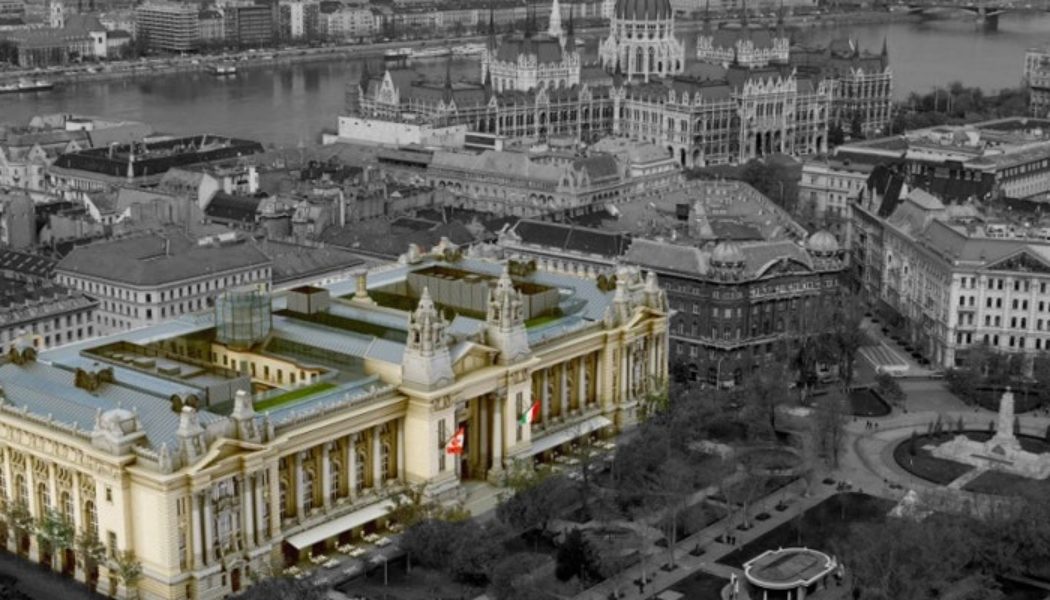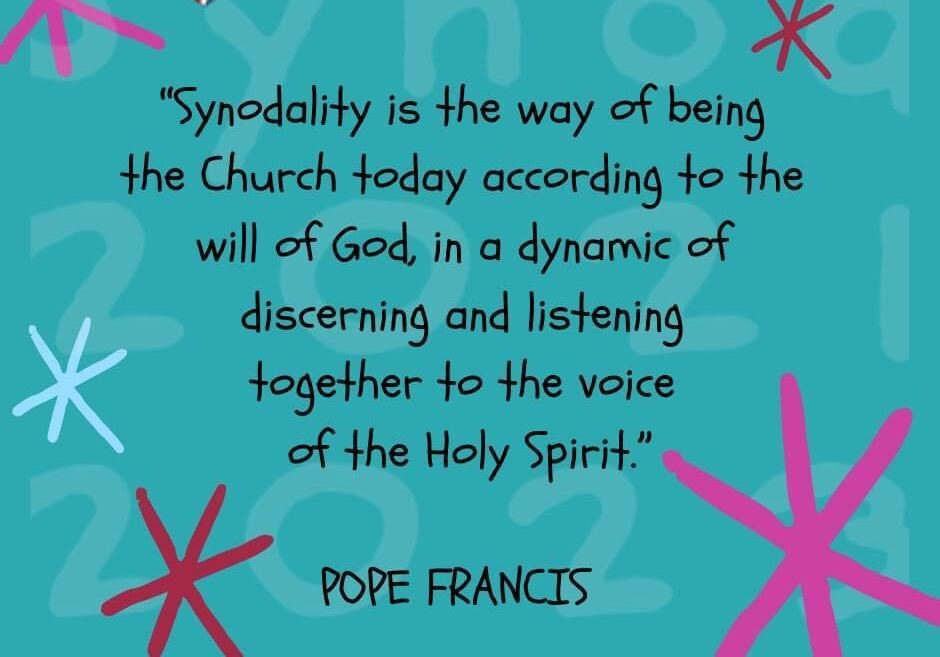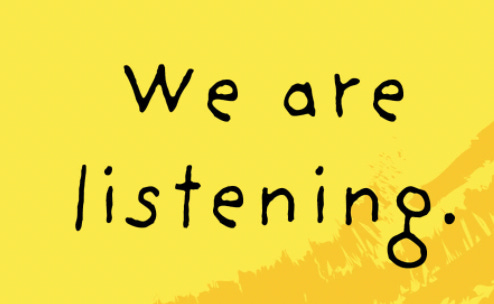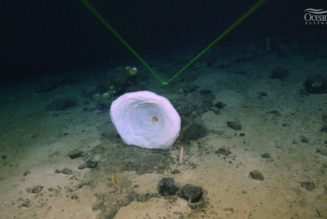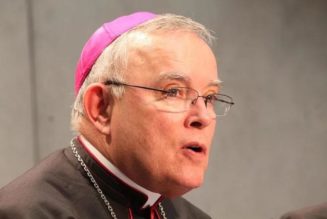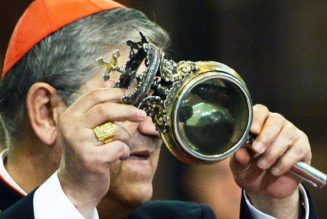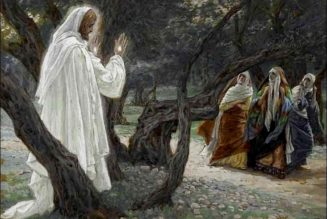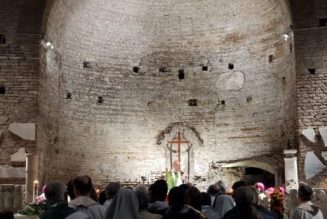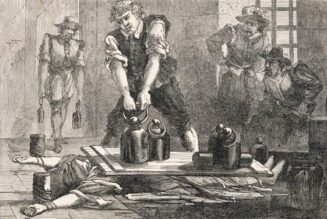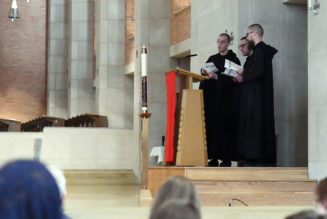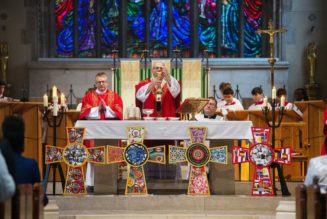Hey everybody,
This is The Tuesday Pillar Post. Let’s get to it, shall we?
The news
Carpathian conundrum
In 2013, the Vatican’s commercial bank, the IOR, agreed to invest 41 million euros into a fund that would purchase and redevelop the Budapest Exchange Palace.
The Exchange Palace is a beautiful old 1905 building, with a grand atrium and Beaux-Arts design, which was built in central Budapest to house the Hungarian stock exchange. By the 1950s, its interior was gutted and cut up to create studios for the state television network, which moved out in 2009. The building has since sat empty.
But a group of investors thought they could turn it into retail space, restaurants, offices, and apartments — and at first the IOR thought it would get in the action. The problem is that when Pope Francis was elected, the IOR was overhauled, and the bank’s new administration decided not to continue with the investment. The Vatican bank paid only 17 million of its pledged 41 million euro investment.
The IOR’s decision has led to nearly a decade of lawsuits and countersuits, and a Maltese court order to seize almost 30 million euro in Vatican bank assets. The entire affair has become a bit of a shambles.
All of that, while pretty strange, is just the background, not the news.
The news is this: The Pillar reported yesterday that while Vatican officials prepared for a papal trip to Hungary in September, they also began making quiet, polite inquiries into whether the Hungarian government of Viktor Orban might not be willing to buy them out of the problem — to buy the Vatican bank’s share of the fund which owns the building.
It does not seem that the Hungarian government has yet made a decision on the Vatican’s request.
Why is this news? Well, it’s interesting as heck, to begin with.
It also resembles in certain ways the drama over the Vatican’s investment in a London development project — which also turned into a fracas — and it points to the ongoing opacity of the various Vatican investment portfolios, which are known to include investment in urban redevelopment projects, movie production, and a host of other things well outside the norm of the safe index funds where one might expect the Holy See to park its cash.
Most especially, though, the IOR’s eagerness to offload its share in the Budapest building suggests that in the wake of the Vatican/London finance scandal, other offices in the Holy See are aiming to offload their “toxic assets” as quickly – and perhaps quietly – as they can.
There may, in fact, be more coming.
(By the way, for a little refresher on what the IOR actually is — and why we call it a Vatican bank, but not the Vatican Bank, read here.)
Read all about the Vatican’s turn at Hungarian real estate development.
‘The plan is the Gospel…. That’s where we’ll begin’
The deadly tornado system that tore across the southeast and the Ohio Valley Friday night did most of its damage in western Kentucky — one tornado tore up a path of destruction more than 200 miles long across the state, leaving at least 74 people dead in its wake.
On Sunday morning, I talked with Bishop William Medley of Owensboro, Kentucky — the diocese in which the most tornado damage was sustained, including the destruction of a candle factory in Mayfield, Kentucky, which saw workers crushed under piles of rubble.
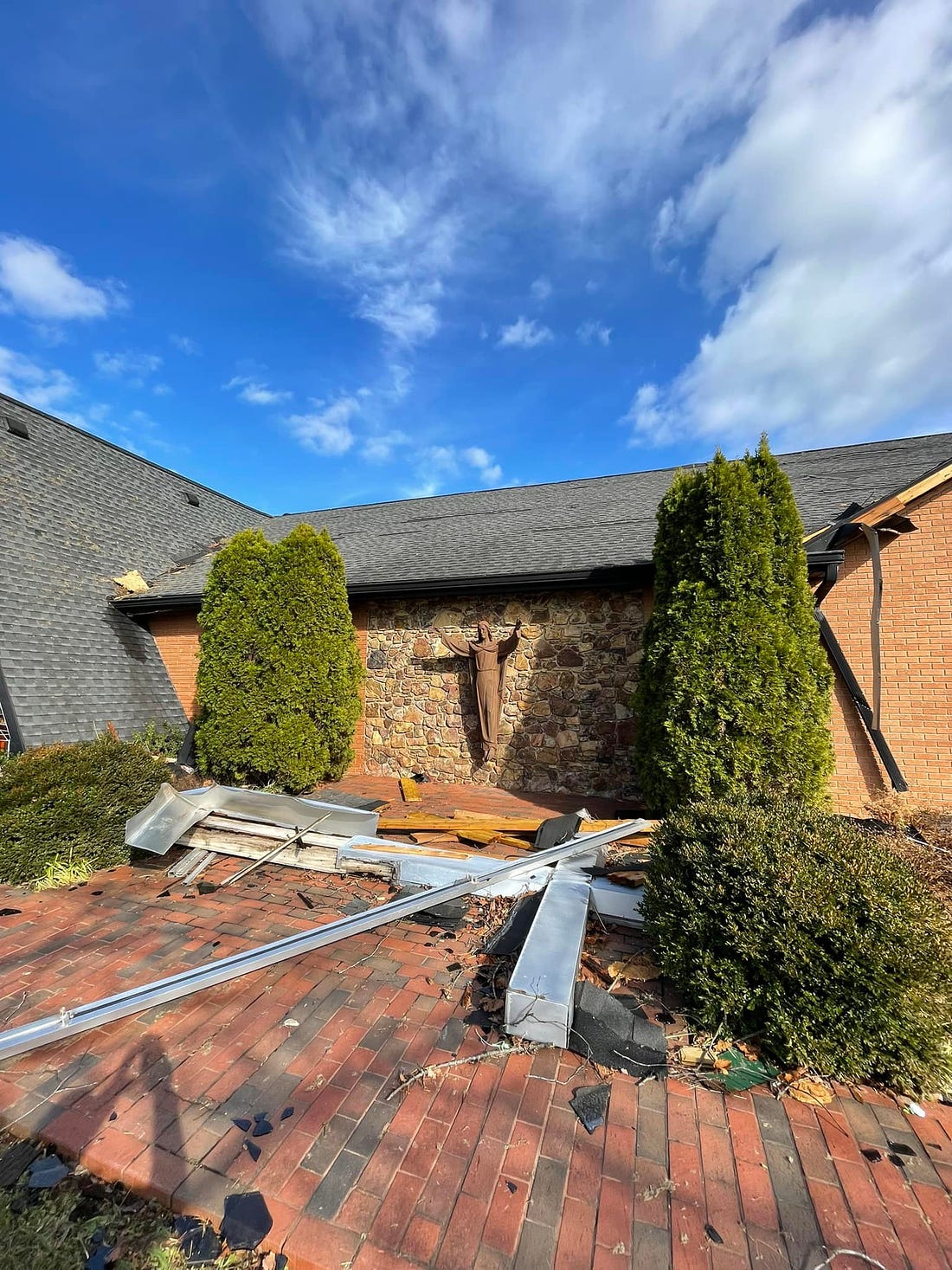
I asked Bishop Medley what he would say on Gaudete Sunday, when the Church commands us to rejoice, when speaking to people who have lost everything, including family members and friends. Here’s what he told me:
“Gaudete Sunday…reminds us that even in the midst of long waiting, we find joy. And so now, to try to feel that at this moment is probably remote, but I hope that perhaps part of the memories of these awful days, for those who come to this Mass today, that it will provide another segment of memory — that when we have tragedy like this, we turn in faith to Christ, the only one who can really give us hope.”
The bishop also talked about how Catholics can help, what’s needed in the state, and how he’ll handle the challenge of ministry after a disaster:
“I ask the Lord to remind me the message of this Advent, that we are people of hope. The the darkest night or the darkest times are not the final chapter, but rather, the resurrection of Christ from the dead is the triumphant story for all humanity,” he told me.
Read the whole interview here.
In other news
After several episcopal resignations around the world, and several U.S. bishops under Vatican investigations, some Catholics have asked whether candidates to become bishops should undergo psychological evaluations before being appointed. Here’s look at that idea.
—
You might have seen headlines and social media posts this week about the Synod on Synodality and New Ways Ministry. If you didn’t follow it too closely, here’s what that’s all about, and what you need to know.
The gist of the story is this —
The Vatican’s two-year synod on synodality process has a webpage that provides links to third-party resources pertaining to the synod. Most of the resources are videos or slide decks from dioceses or religious orders, and a few are similar kinds of things from Catholic non-profits of one kind or another.
At some point, a video from New Ways Ministry, an LGBT-advocacy group which the USCCB has said is substantially not-Catholic, was posted among the synod resources. The video itself is a fairly straightforward theological presentation on synodality — there may be a lot in the content that theologians would argue about, but nothing pertaining directly to the sexuality issues that New Ways Ministry tends to talk about.
Well, the video got attention when Fr. James Martin tweeted about it, calling its inclusion among the synod resources a “small but historic step forward for LGBTQ Catholics,” by which Martin says he meant a recognition that the voices of “Catholics on the margins” would be heard, but which at least some took to mean otherwise.
After Martin’s tweet, the video’s publication apparently led to complaints — at least according to Martin — and then the video was taken down. After more complaints, the video was put back up — which some folks have portrayed as an endorsement of both its content, and of New Ways Ministry itself — an endorsement that would be scandalous, given that the USCCB has been so clear about New Ways Ministry’s rejection of Catholic doctrine.
Here’s what all this portends for the synod process:
The Church says it wants the synod to be a process of listening to everyone, orthodox or heterodox, practicing or non-practicing. That, as I’ve said before, is actually a worthwhile exercise, if it is approached prudently and thoughtfully.
But it is also a process easily politicized — and it will be.
The synod is happening. The Church is inviting groups outside the norm to talk in a public way about their experience and perspective; those groups will have a seat in the discussion. Whether you think this whole thing is a good idea or a bad idea, the horse is out of the gate.
But there is not clarity about what that means. In this case, the undefined notion of “resources” on the synod website poses legitimate confusion: Are these videos curated – hand selected by Church officials as a kind of recommendation? If so, by what criteria? Who decides, and where can Catholics read about what the classification of videos as synod “resources” actually means?
Without very clearly stated ground rules, an attempt at a sensitive engagement too easily becomes a fractious conversation, in which undefined or vaguely defined efforts at inclusion have a correspondent effect of either confusion or alienation.
And the ambiguity provides an opportunity.
For those who profit from controversy, the synod will be the occasion to play a non-stop game of politics. For dueling camps of take-havers, it will be fodder for spectacle. Dumb things will happen during the synod, and people will troll each other, and YouTube virtuosos will promise that the synod is the single-worst moment in the Church’s history, while ultramontane blogs praise it as the singular greatest expression of the Christian gospel.
Of course New Ways Ministry has an ecclesial agenda. And, of course, they’re going to try to participate at an event in which the Church says all voices are welcome. And, of course, they’re going to try to get their videos listed among the synod’s resources, and of course, that’s going to be spun as an endorsement and become controversial. None of those things should be surprising. But absent clarity from synod organizers, news cycles like that one will be repeated over and over for the next two years.
An entire cottage industry will use the synod to stir up social media controversy, grab some headlines, sell some books, please some donors, and promote an agenda. Count on that happening at every stage of the process between now and the final meeting of bishops.
Synod officials may not have anticipated the issues that could surround the prospect of a sensitive global conversation which begins without clear policies on things like resource lists. But anxiety is high among some Catholics about the synod, and for a project which says it is about listening, it is somewhat surprising that hadn’t been considered before the synod launched.
Whatever one thinks about the controversy surrounding the “Pachamama” statue at the Vatican’s Synod on the Amazon, it is certain that Vatican ambiguity about what the statue was, and what it meant — and even conflicting answers from Vatican officials about those questions — compounded and calcified the affair, which some people were very keen to politicize. There are lessons in that experience for synod officials. The lesson is not that noise on the internet is to be ignored.
Now, some Catholics observing all this will point out that the Lord dined with Zacchaeus the tax collector, and he did not first clarify the meaning of the dinner. That’s true. But the Lord did not publish Zaccheaus’ pamphlet on tax ethics as a “resource” for his disciples. It’s reasonable to expect that a project like the synod will have to think carefully about what its own actions are understood to mean, and how to both anticipate and defuse politicized or manufactured controversy.
In short, the synod on synodality is a logistically challenging and frighteningly expensive global series of meetings that will not likely define a new way of “being Church,” and probably won’t be repeated any time in the future. But as it unfolds the General Secretariat for the Synod of Bishops has a responsibility to be thoughtful about how the synod can serve ecclesial unity, and the potential it has to undermine it.
—
Now, I want to be clear that I think the synod has a lot of potential for good, especially at the local level. The truth is not threatened, and the Church is not actually weaker for hearing perspectives with which she disagrees.
In fact, however we got here, astute Catholics will take notes when others speak during the synod process, to understand best how other people think, and what they value, and what they’re concerned about — and to draw from that some wisdom into how to better proclaim the Gospel, in the fullness of its truth, in a way that might actually make a difference for the salvation of souls.
Whatever else it is, the synod is an opportunity to learn things – and a genuine opportunity to invite the Holy Spirit into fractious conversations in the Church. But we — and especially the General Secretariat for the Synod — have to do our part.
May wisdom prevail.
With all of that said, it’s worth noting that dioceses around the world have begun releasing materials for the local phase of the synodal process. And many of those dioceses are using the same crayon-block fonts for their materials that the Holy See used for the official logos and guidebooks.
Here’s the main synod logo, courtesy of the Vatican:
Here’s a graphic released by one Canadian diocese, apparently committed to font consistency with the Holy See:
Here’s a clip from another diocesan synod resource:
A friend made a pithy observation this week: “There is a certain incongruity on holding a synod on something as abstract as ‘synodality’ (which is a neologism coined by the pope), that needs a primer in Greek etymology to explain, then using a finger paint font to publicize the whole thing.”
An incongruity, indeed.
Notes
Thank you again for those who of you who have subscribed to The Pillar in recent weeks, or even earlier in the year. We’re grateful for you. We’re in the process now of planning our budget for 2022, which means planning what additions to our team and to our coverage are really possible. New subscribers in December help us plan well, to continue growing the work of Catholic journalism we’ve begun this year, with your help.
And as a reminder, during the month of December, we’ll send $10 for every new paying subscriber to Aid to the Church in Need, so that priests serving poor parts of the world have the Mass stipends which sustain their ministry. Those priests will be offering Masses for our readers, and for the holiness of the Church.
Also, a subscription to The Pillar makes a very, very nice Christmas gift for your favorite Church nerd, seminarian, convent of nuns, or local priest. I’m just saying.
As we get close to the Christmas octave, our coverage at The Pillar will slow down a little bit, but it won’t entirely come to a stop. Still, we’ll aim to spend a little bit more time with our families in the days leading up to Christmas and its celebration, and we hope you will too.
For me, that means pitching in a bit more at home, because Mrs. Flynn took a little tumble Sunday afternoon and broke her foot. While she’s adamant that she can hobble around in an orthopedic boot with no problems, I prefer she be resting. I’m horrible with wrapping gifts though — I’m basically all thumbs — so she’s still got to do that one.
Today is the feast of St. John of the Cross, a Carmelite friar, a priest and a mystic, and a Doctor of the Church. He was taught by St. Teresa of Avila, was for eight months imprisoned by Carmelite friars who opposed the reform movements he was part of, and after a long career of working to reform the Carmelite order, he died in an isolated Spanish monastery at 49.
In a lifetime of suffering, he found Christ on the Cross. Here he is on that experience:
Would that men might come at last to see that it is quite impossible to reach the thicket of the riches and wisdom of God except by first entering the thicket of much suffering, in such a way that the soul finds there its consolation and desire. The soul that longs for divine wisdom chooses first, and in truth, to enter the thicket of the cross.
Be assured of our prayers in these last weeks of Advent, and pray for us. We need it.
Yours in Christ,
JD Flynn
editor-in-chief
The Pillar
Join Our Telegram Group : Salvation & Prosperity
